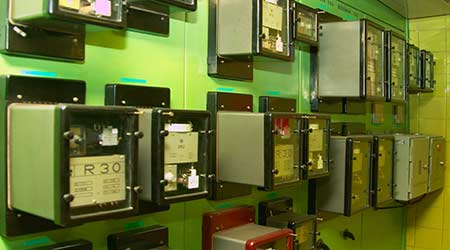Understanding How Data Should Drive Energy Upgrades
Part 1 of a 3-part article on how facility managers should use numbers to plan energy measures and to prove they worked
It’s important for facility managers to understand the importance of data before, during, and after energy efficiency projects. Data can be your friend. Data — which as we’ll see, comes from such sources as utility bills, meters, submeters, and data loggers — guides energy audits (also called energy assessments) that lead to the creation of energy conservation measures (ECMs) that in turn will serve the building’s interests. Those audits also provide reliable estimates of energy savings and return on investment (ROI) — an important benefit, since measurement and verification (M&V) are essential with energy upgrades.
There are plenty of ways to get useful data for an energy project. Energy professionals (professional engineers and certified energy managers) divide data into two categories: primary (data you collect) and secondary (already in existence).
Let’s start with the latter. Energy audits start with a detailed understanding of a building’s monthly utility bills (electricity, natural gas, water/sewer, and other fuels such as district chilled water or steam). Each utility bill provides useful information about each meter reading and, most importantly, how the customer is billed based on the design of each utility rate (tariff). Average cost per utility unit, while useful, only tells part of the picture.
Most utility companies can produce a 12-24-36 month summary of monthly consumption and costs that provide the energy auditor with insight into how the building performs seasonally. This data is the basis of developing an energy balance for each building. Many utilities with advanced metering can also provide you with interval data or consumption every 15 to 30 minutes showing the rate of consumption (i.e., demand) and the level of consumption 24/7.
Additional secondary utility data may be available for electrical, energy (BTU), natural gas, and water submetering of tenants or building systems. Some buildings will have a separate utility service or submeter for the central plant to enable the facility staff to provide monthly utility cost allocation based on something other than tenant square footage. This level of data provides a better understanding of who is using energy, where, and when.
Most buildings have electrical submeters and some have submetering for natural gas or water. The combination of building-owned and utility-owned meters and submeters and tenant submetering provides the energy engineer with insight into utility consumption and thereby the data with which to create an accurate energy balance spreadsheet and pie chart.
Some energy management systems and building automation systems also have programmable data logging functions, often called trends in EMS/BAS speak.
Using Utility Databases Carefully in Efficiency Upgrades
When energy efficiency upgrades are being evaluated, care needs to be exercised in relying on utility databases intended for benchmarking energy use such as Energy Star Portfolio Manager.
Benchmarking energy use in MMBTU per square foot of building space is becoming more common as a voluntary or mandatory annual report.
Some utility data-based services maintain the real or raw data but report normalized data. Normalized energy consumption data may be adjusted based on heating degree days, cooling degree days, meter reading date, occupancy, production, or other factors.
Month after month and year after year, data need to be reported accurately or at least provide some indication of whether the data is real or normalized. Many utility data bases fail to flag data that is obviously in error or is based on an estimate of missing data. Another factor is that utility bills themselves can be based on actual meter reading or estimated readings. Some utility meters are only read every other month to reduce the utility’s meter reading expense, and some only provide an actual meter reading every six or 12 months. Facility managers should be aware of these variables and require any energy professionals they hire to properly report data. — Richard G. Lubinski
|
Related Topics:














